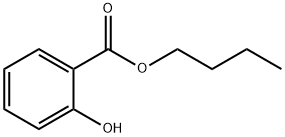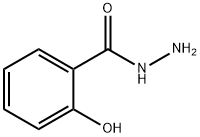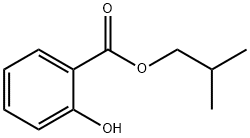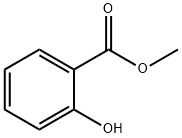Hexyl salicylate
Synonym(s):2-hydroxyhexyl ester benzoic acid;Hexyl 2-hydroxybenzoate
- CAS NO.:6259-76-3
- Empirical Formula: C13H18O3
- Molecular Weight: 222.28
- MDL number: MFCD00036487
- EINECS: 228-408-6
- SAFETY DATA SHEET (SDS)
- Update Date: 2025-12-17 09:49:47

What is Hexyl salicylate ?
Chemical properties
Colorless and transparent oil liquid
Chemical properties
Hexyl Salicylate has been reported in carnation flower absolute . It is a colorless liquid with a green, floral, spicy odor, reminiscent of azaleas. It is used for blossom and herbal notes in perfumes, for example, in soaps, personal hygiene products, and detergents.
Occurrence
Has apparently not been reported to occur in nature.
The Uses of Hexyl salicylate
Hexyl salicylate may be used as an internal standard for the determination of allergenic ester, benzyl salicylate in propolis specimens using gas chromatography-mass spectrometry (GC?MS), high-performance liquid chromatography (HPLC), and ultraviolet-visible (UV?Vis) spectrophotometry. It may also be used as a standard fragrance material for the quantification of the analyte in wastewater treatment plants using gas chromatography-mass spectrometry (GC?MS).
Preparation
By methyl salicylate exchange with n-hexanol using a sodium methoxylate catalyst.
Definition
ChEBI: Hexyl salicylic acid is a benzoate ester.
General Description
Hexyl salicylate belongs to the class of flavor & fragrance standards, for use in food, beverage and cosmetic industry. These standards are widely used to add taste and/or smell to products without aroma, to mask unpleasant odors and to maintain stability of original flavor.
Flammability and Explosibility
Non flammable
Metabolism
Because of the widespread medicinal use of salicyclic acid and its derivatives, there is an extensive literature on the metabolism and excretion of these compounds. Most esters of salicyclic acid hydrolyse to salicylic acid in the body, but this occurs more readily with the lower esters, little of the amyl ester being split. A large proportion of salicylic acid is excreted unchanged by most species; salicyluric acid, gentisic acid, and salicylglucuronides are also known to be excreted (Williams. 1959). Salicylic acid has been found to be teratogenic to rats (Koshakji. 1972).
Properties of Hexyl salicylate
| Boiling point: | 290 °C (lit.) |
| Density | 1.04 g/mL at 25 °C (lit.) |
| vapor pressure | 0.077Pa at 23℃ |
| refractive index | n |
| Flash point: | >230 °F |
| storage temp. | Sealed in dry,Room Temperature |
| solubility | Chloroform (Sparingly), DMSO (Slightly) |
| pka | 8.17±0.30(Predicted) |
| form | neat |
| color | Colourless oily liquid. |
| Odor | at 100.00 %. fresh herbal orchid green |
| Water Solubility | 0.28g/L(37 ºC) |
| BRN | 2453103 |
| CAS DataBase Reference | 6259-76-3(CAS DataBase Reference) |
| NIST Chemistry Reference | N-hexyl salicylate(6259-76-3) |
| EPA Substance Registry System | Hexyl salicylate (6259-76-3) |
Safety information for Hexyl salicylate
| Signal word | Warning |
| Pictogram(s) |
 Exclamation Mark Irritant GHS07  Environment GHS09 |
| GHS Hazard Statements |
H315:Skin corrosion/irritation H317:Sensitisation, Skin H410:Hazardous to the aquatic environment, long-term hazard |
| Precautionary Statement Codes |
P261:Avoid breathing dust/fume/gas/mist/vapours/spray. P264:Wash hands thoroughly after handling. P264:Wash skin thouroughly after handling. P272:Contaminated work clothing should not be allowed out of the workplace. P273:Avoid release to the environment. P280:Wear protective gloves/protective clothing/eye protection/face protection. P302+P352:IF ON SKIN: wash with plenty of soap and water. |
Computed Descriptors for Hexyl salicylate
Hexyl salicylate manufacturer
New Products
4,4-Difluoropiperidine hydrochloride tert-butyl 9-methoxy-3-azaspiro[5.5]undecane-3-carboxylate Indole Methyl Resin N-Isopropylurea N,N-Dicyclohexylcarbodiimide(DCC) MELDRUMS ACID 5-METHYLISOXAZOLE-4-CARBOXYLIC ACID Magnessium Bis glycinate Zinc ascorbate 1-bromo-2-butyne 2-acetamidophenol 9(10H)-anthracenone Erythrosin B, 4-Piperidinopiperidine 2-((4-morpholinophenylamino) (methylthio) methylene) malononitrile 2,4-dihydroxybenzaldehyde 3-(4-morpholinophenylamino)-5-amino-1H-pyrazole-4-carbonitrile Methyl 2-methylquinoline-6-carboxylate 2,6-dichloro-4-nitropyridine 4-Bromo-2-chlorobenzonitrile 2-(benzylamino)acetic acid hydrochloride 4-(tert-Butoxycarbonylamino)but- 2-ynoic acid 3,4-dihydro-2H-benzo[b][1,4]dioxepine 1-Phenyl-1-cycloprppanecarboxylicacidRelated products of tetrahydrofuran








You may like
-
 6259-76-3 HEXYL SALICYLATE 99%View Details
6259-76-3 HEXYL SALICYLATE 99%View Details
6259-76-3 -
 6259-76-3 98%View Details
6259-76-3 98%View Details
6259-76-3 -
 Hexyl Salicylate 99%View Details
Hexyl Salicylate 99%View Details
6259-76-3 -
 Hexyl Salicylate 6259-76-3 98%View Details
Hexyl Salicylate 6259-76-3 98%View Details
6259-76-3 -
 6259-76-3 Hexyl Salicylate 98%View Details
6259-76-3 Hexyl Salicylate 98%View Details
6259-76-3 -
 Hexyl salicylate CAS 6259-76-3View Details
Hexyl salicylate CAS 6259-76-3View Details
6259-76-3 -
 Hexyl Salicylate (6259-76-3), Packaging Size: DrumView Details
Hexyl Salicylate (6259-76-3), Packaging Size: DrumView Details
6259-76-3 -
 20677-73-0 (2,2-diethoxyethyl)methylamine 98%View Details
20677-73-0 (2,2-diethoxyethyl)methylamine 98%View Details
20677-73-0
